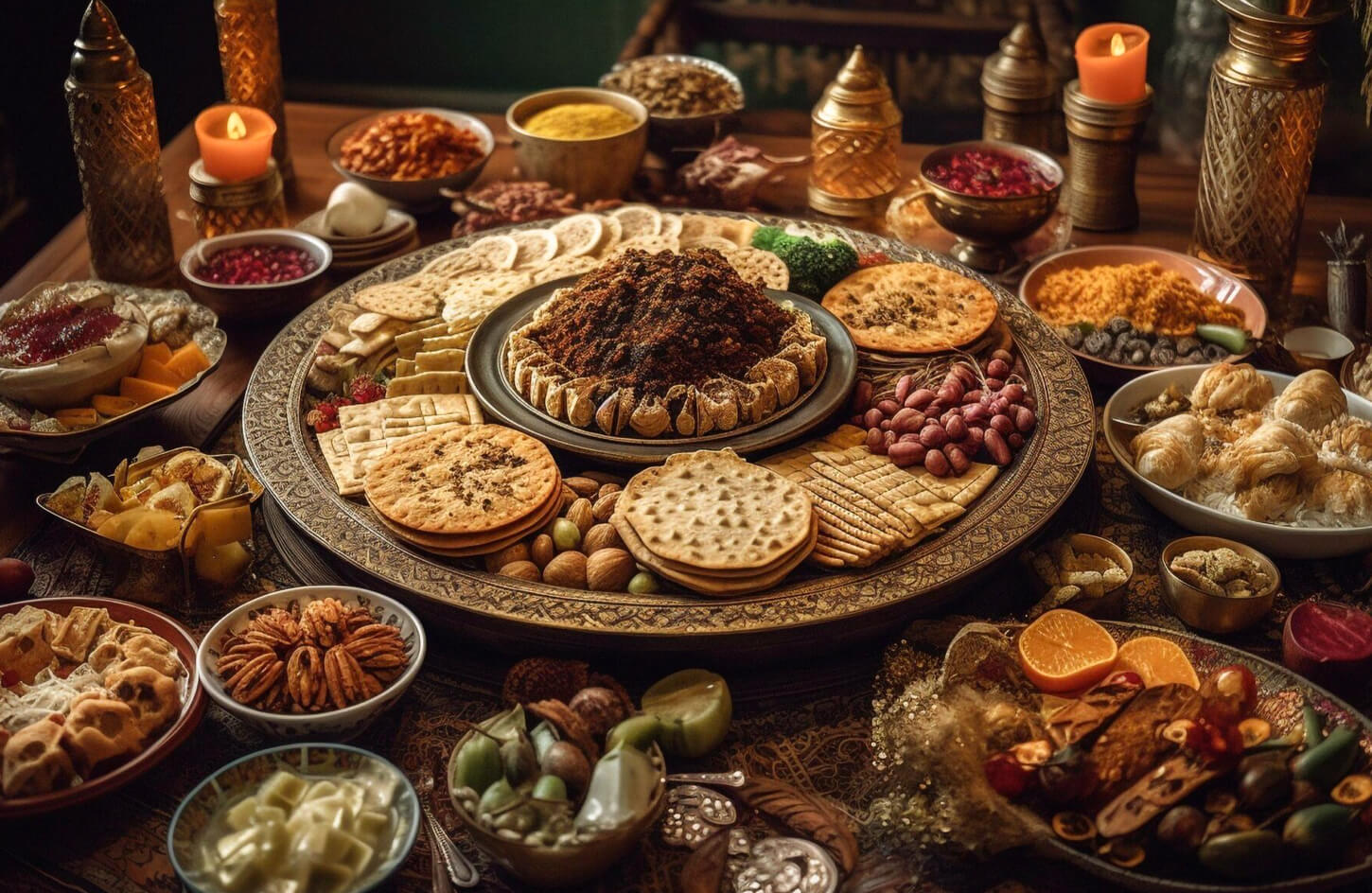Moroccan cuisine is a vibrant tapestry of flavors, aromas, and textures that tantalize the senses and tell the story of a rich cultural heritage. Steeped in history, Moroccan food combines the influences of Berber, Arab, Andalusian, and Mediterranean traditions, creating a culinary experience like no other. A journey through Morocco’s bustling markets and lively streets reveals the soul of this cuisine—fresh ingredients, bold spices, and time-honored cooking techniques. Let us take you on a detailed exploration of Moroccan markets and street food, where every bite is a celebration of flavor.
The Allure of Moroccan Markets: A Feast for the Senses
Exploring the Vibrant Souks
Moroccan markets, or souks, are the beating heart of the country’s culinary scene. From the labyrinthine alleys of Marrakech’s Jemaa el-Fnaa to the coastal charm of Essaouira’s markets, these vibrant hubs offer an authentic glimpse into Moroccan life. As you wander through the stalls, you’ll encounter heaps of colorful spices, plump olives, fragrant herbs, and freshly baked bread. The energy is infectious, with vendors calling out their wares and the air filled with the aromas of sizzling meat and sweet pastries.
Key Ingredients Found in Moroccan Markets
- Spices: Morocco is synonymous with bold and fragrant spices such as saffron, cinnamon, cumin, paprika, and turmeric. These spices are the backbone of dishes like tagines and harira soup.
- Preserved Ingredients: Preserved lemons and olives are staples in Moroccan cooking, adding a unique depth of flavor to dishes.
- Fresh Produce: Markets overflow with fresh vegetables, fruits, and aromatic herbs like cilantro, parsley, and mint, which play a crucial role in Moroccan recipes.
- Bread: Moroccan bread, or khobz, is baked fresh daily in communal ovens. Its crusty exterior and fluffy interior make it the perfect accompaniment to any meal.
Street Food in Morocco: A Culinary Adventure
Sizzling Skewers: The Beloved Brochettes
Brochettes, or grilled meat skewers, are a street food staple. These skewers, made from chicken, beef, or lamb, are seasoned with a medley of Moroccan spices and grilled over open flames. Served with a side of khobz, a dollop of spicy harissa, and a sprinkle of cumin, brochettes are a quick and flavorful snack enjoyed by locals and tourists alike.
Moroccan Pancakes: Msemen and Beghrir
No visit to Morocco is complete without sampling its iconic pancakes.
- Msemen: A flaky, layered pancake often served with honey and butter. Its chewy texture and buttery flavor make it a breakfast favorite.
- Beghrir: Known as the “thousand-hole pancake,” beghrir is light and spongy, served with a drizzle of honey and melted butter.
Snail Soup: A Unique Delicacy
For the adventurous foodie, Moroccan snail soup, or babbouche, offers a one-of-a-kind experience. This dish features tender snails simmered in a spiced broth made with anise, thyme, and pepper. It’s a beloved street food that’s both comforting and full of flavor.
The Quintessential Moroccan Dishes You Must Try
Tagine: A Culinary Masterpiece
The tagine is the crown jewel of Moroccan cuisine. Named after the earthenware pot it’s cooked in, this dish is a slow-cooked medley of meat, vegetables, and spices. Popular variations include:
- Chicken with Preserved Lemons and Olives: A tangy and savory combination that melts in your mouth.
- Lamb with Prunes and Almonds: A sweet and savory delight, enhanced with cinnamon and honey.
Couscous: The Traditional Friday Feast
Couscous is a Moroccan staple traditionally served on Fridays. Steamed semolina grains are topped with tender meat, vegetables, and a rich broth. This dish is often accompanied by tfaya—a sweet mixture of caramelized onions, raisins, and cinnamon.
Pastilla: Sweet Meets Savory
Pastilla is a flaky pastry filled with a savory-sweet mixture of pigeon or chicken, almonds, and cinnamon, encased in layers of warqa (thin pastry dough). Sprinkled with powdered sugar, it’s a dish that embodies the complexity of Moroccan flavors.
The Role of Moroccan Tea: A Cultural Ritual
Mint tea, or atay bi naanaa, is more than just a beverage in Morocco—it’s a symbol of hospitality and culture. Made with green tea, fresh mint leaves, and sugar, this aromatic drink is served in elaborate silver teapots and poured into small glasses from a height to create a frothy top. It’s enjoyed throughout the day and is often paired with sweet treats like chebakia (honey-soaked sesame cookies).
Tips for Navigating Moroccan Markets and Street Food
- Come Hungry: Moroccan street food is best experienced with an appetite. Sample a little of everything to fully appreciate the variety.
- Embrace the Spices: Don’t shy away from the bold flavors of Moroccan cuisine. Ask vendors for recommendations and be adventurous.
- Negotiate Respectfully: Bargaining is part of the experience in Moroccan markets. Approach it with a smile and a sense of humor.
- Stay Hydrated: The bustling markets can be overwhelming, so carry water to stay refreshed.
Why Moroccan Cuisine is a Culinary Treasure
Moroccan cuisine is a harmonious blend of flavors, traditions, and techniques that captivate the palate and enrich the soul. Its markets are a sensory overload, filled with the colors and smells of fresh produce and aromatic spices. The street food scene is an adventurous journey, offering everything from savory skewers to sweet pastries. Every bite tells a story of Morocco’s rich cultural heritage and its passion for food.


